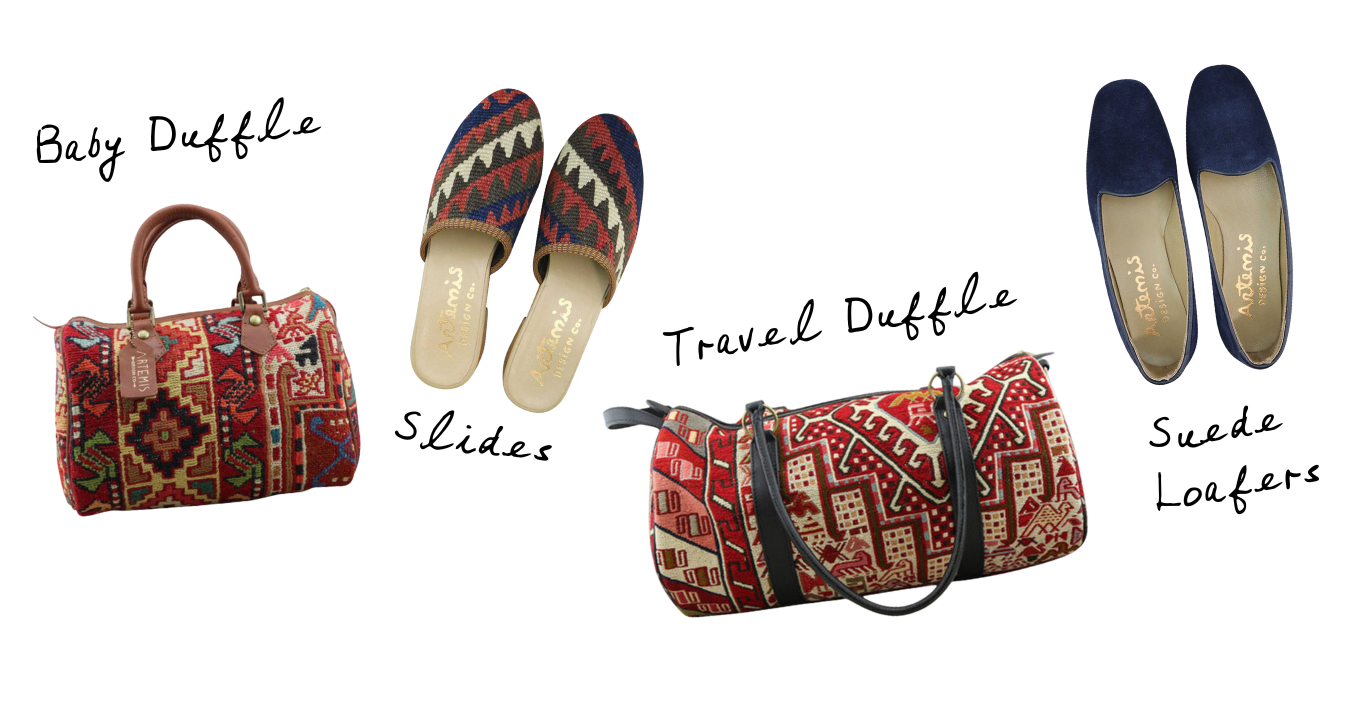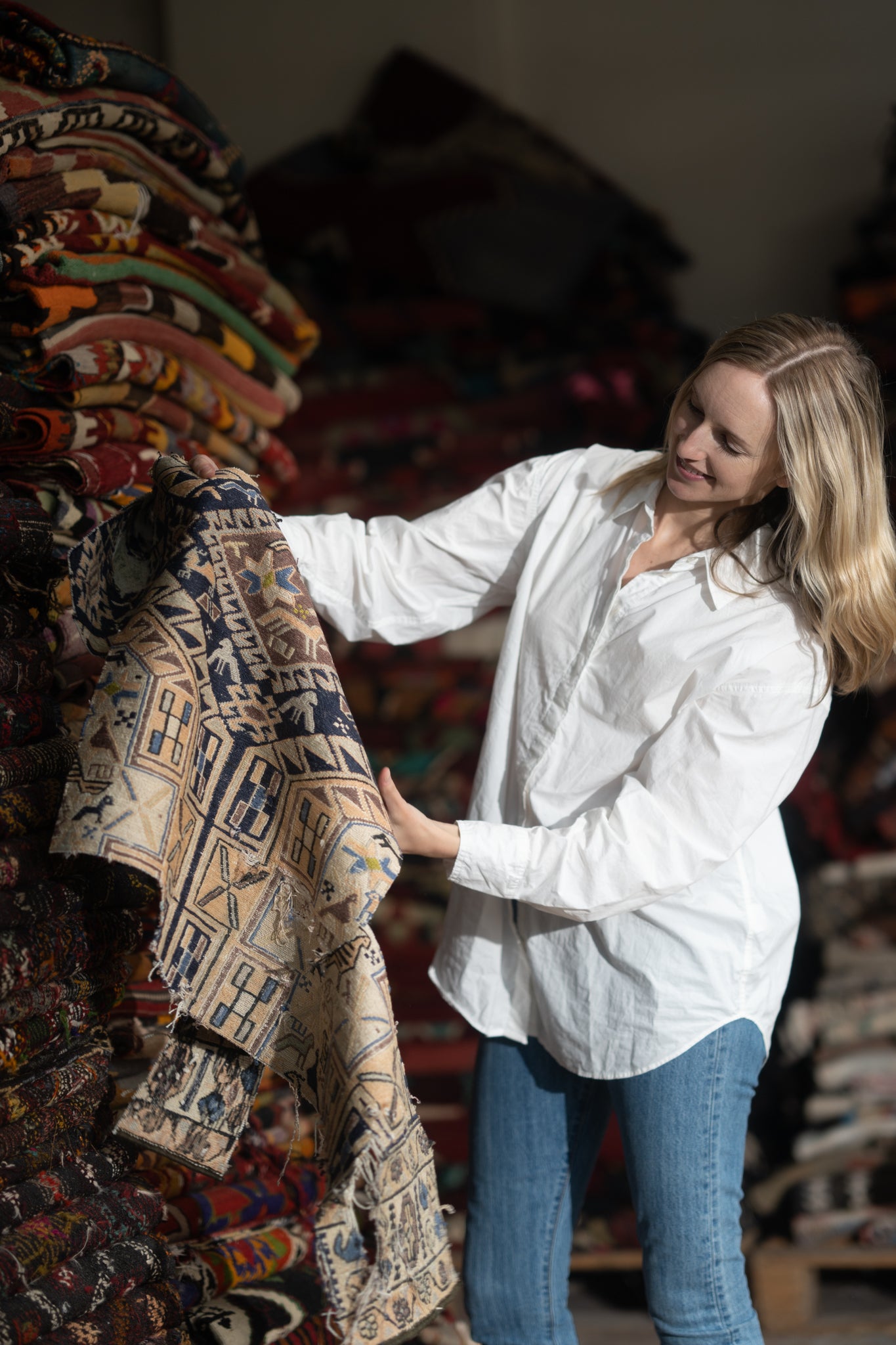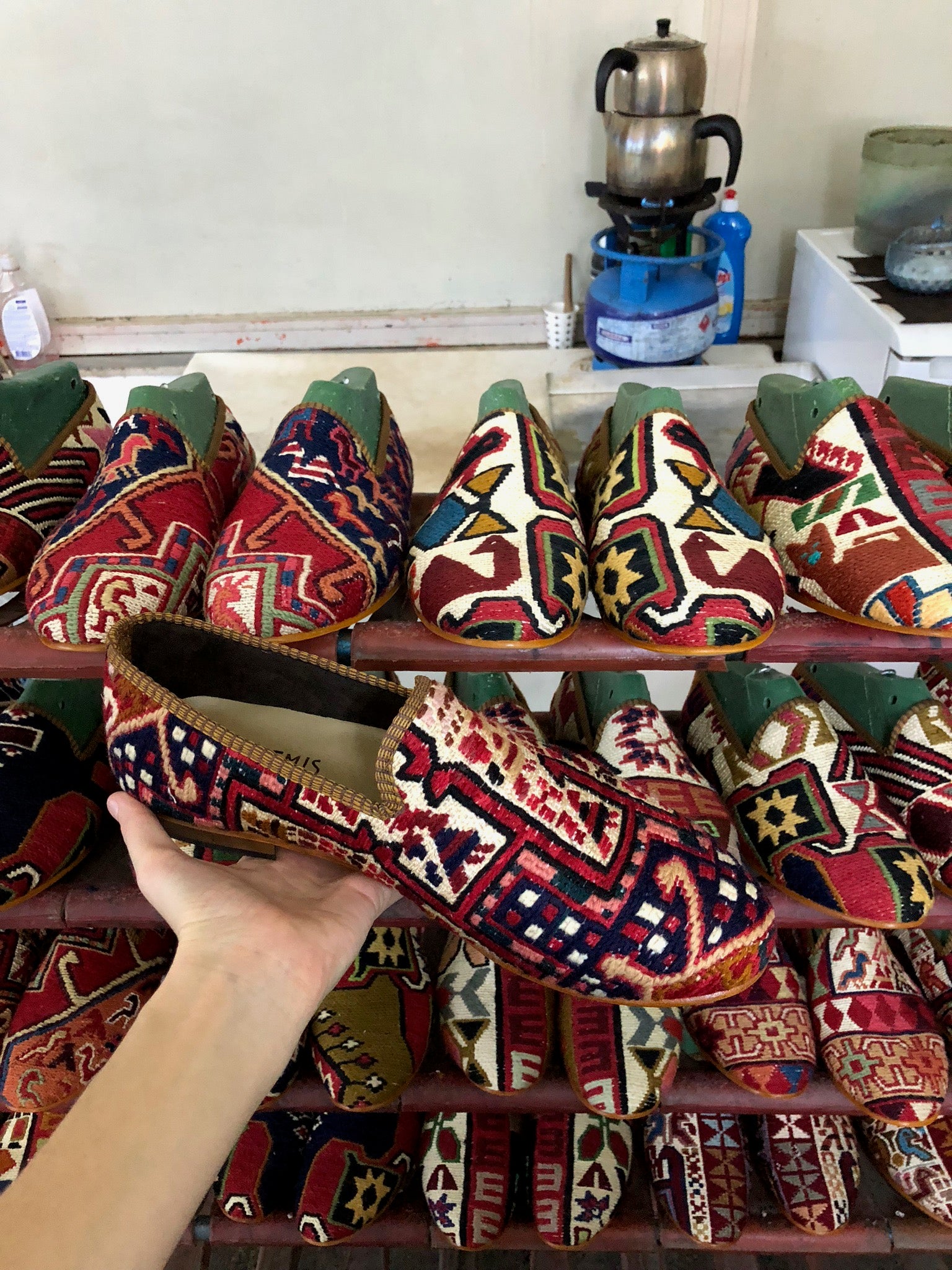How to care for your Kilim Carpet
Just like your kilim shoes, there are preventative measures you can take to extend the life of your kilim carpet, and best practices for cleaning up any stains or mess.
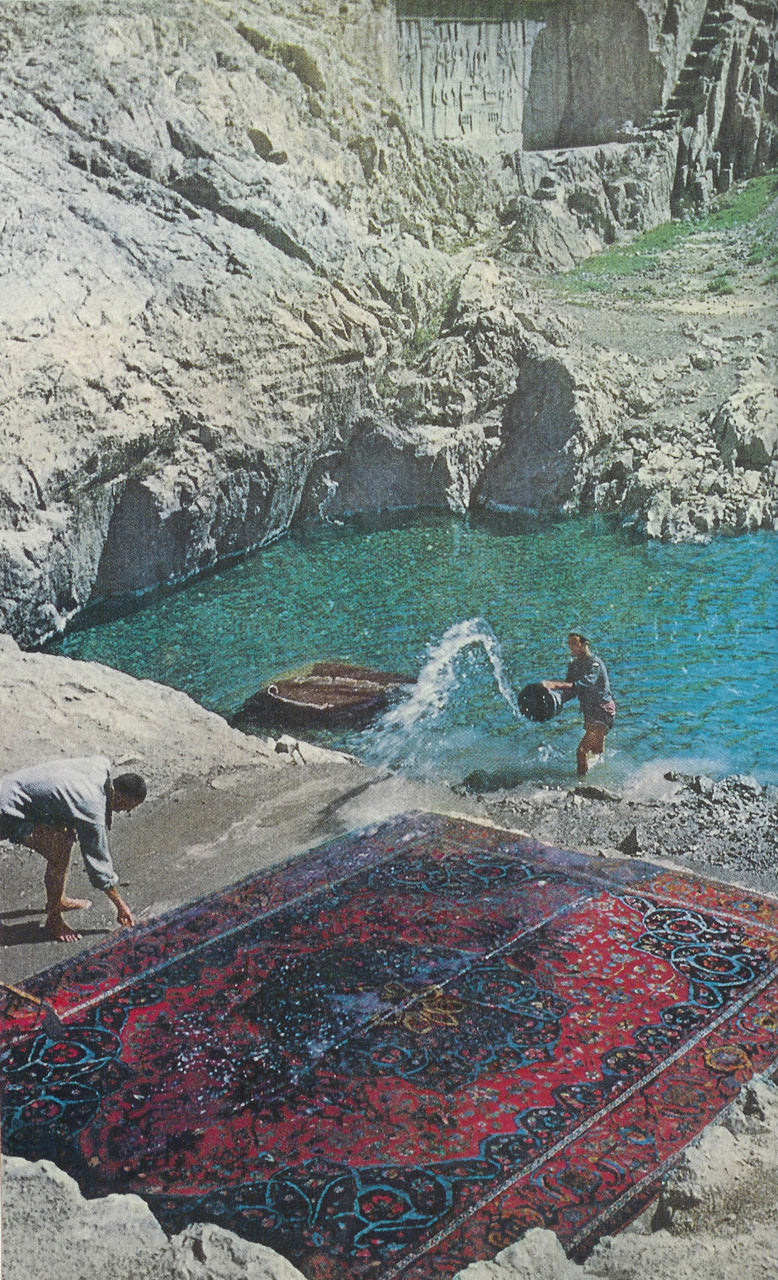
"Rug Washers in Tehran"- 1960 National Geographic
Invest in an underlay
Your mother was right: carpets do require underlays, kilim carpets especially so. Aside from insulating against noise, cold and moisture, a good underlay reduces wear by providing a barrier between the carpet and the harder surface of a floor.
 Photo via bedbathhome.com
Photo via bedbathhome.com
Think about shade
It’s a simple fact that direct sunlight causes fading. And that may not be a bad thing, if you appreciate the vintage look created by a good fade. However, note which areas of the carpet receive sunlight. If certain parts of the carpet remain under furniture or don’t catch any rays in the course of the day, the carpet will fade unevenly. Again, some might find uneven fading to be aesthetically pleasing, but it helps to plan for what kind of fading you wish your kilim carpet to experience—or not.
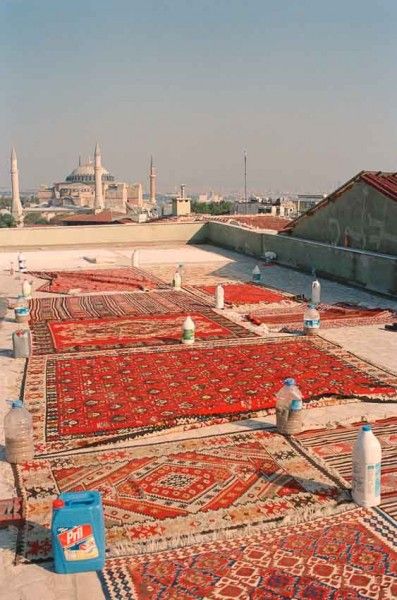
These carpets in Istanbul are being intentionally sun faded for a vintage look. Bab-ı Ali Caddesi No 8, Istanbul 2013. Copyright Simone Haug.
Keep plants away
We love house plants, and we appreciate someone with a green thumb. In fact, we think that a kilim carpet and a well-cared-for potted plant are two of the easiest ways to add life and vibrancy to any living space. However, you should keep these two elements of décor far away from each other. Why? Because plants require constant moisture, and moisture is the enemy of all kilim carpets. Setting your favorite plant on top of your favorite kilim risks stains and mildew damage and could expose the kilim carpet to any insects that find a home in your plant.
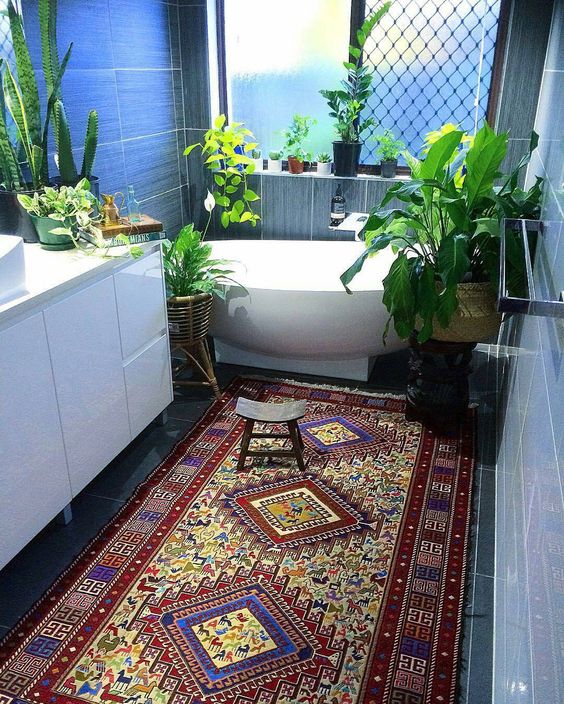
This is a fun look, but keep your Kilim away from moisture if you hope to keep it for a long time :) Photo credit- https://thewishingtrees.com/
Treat stains right away, but don’t go overboard
If you experience any kind of stain on your carpet, you should treat it immediately to remove as much of the stain as possible before it sets in. And just like stains on clothing, you should always “dab” the stained area with a damp, but not wet, cloth, and avoid rubbing as you might push the stain deeper into the fabric. For stains caused by solid materials like food or mud, you should use a butter knife to gently scrape away any solid matter before working on the liquid stain. At the same time, exercise caution: if you go overboard with cleaning or get lost in the online portal of home remedies, you can easily cause more damage to your carpet. Stains that don’t immediately come out with gentle cleaning are best left to professionals that specialize in kilim carpets.
“In the spring I like to take all of my Kilims outside for a good beatdown! I shake them vigorously and beat them with a broom to dislodge any dust or debris that’s accumulated over the winter”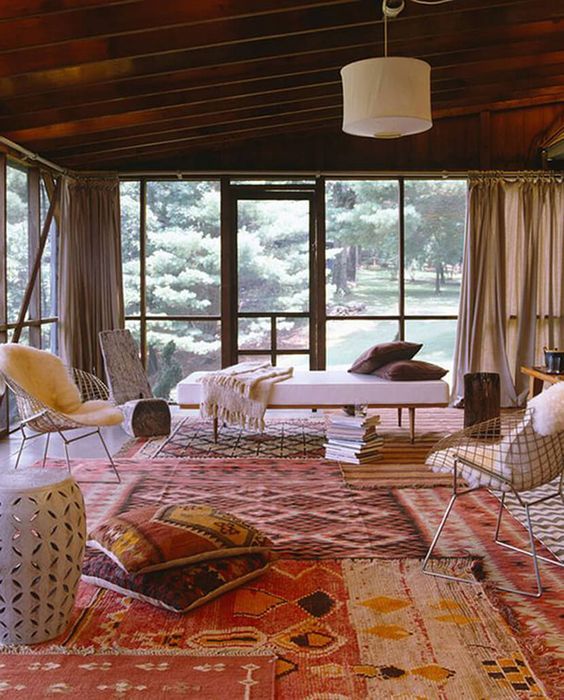 Loving the look of Turkish and Moroccan carpets and Kilims layered in this dreamy screened in porch. Image source linked here.
Loving the look of Turkish and Moroccan carpets and Kilims layered in this dreamy screened in porch. Image source linked here.
Plan for moths
Moths are hungry for more than just your favorite sweater—they love to snack on the wool and silk that makes up your kilim carpet, too. To prevent moths, be sure to vacuum your carpet on a weekly basis and pay extra attention to any portions of the carpet that are covered by furniture; moths look for dark, undisturbed places to hide out. Moths are also attracted to organic matter, so make sure that any stains caused by food, drink or waste are thoroughly cleaned: any remaining traces will attract moths.




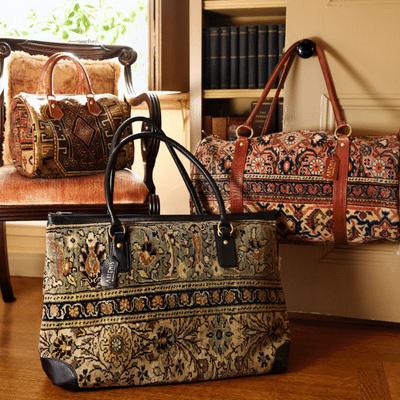
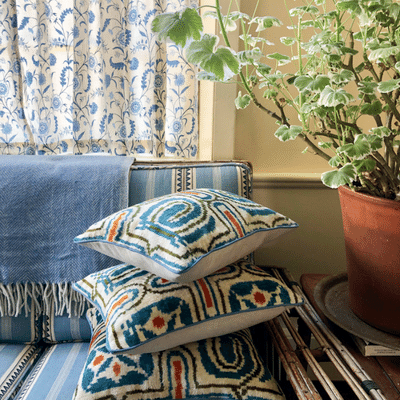
 Photo via bedbathhome.com
Photo via bedbathhome.com

